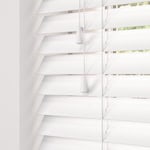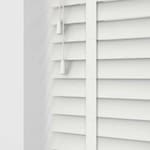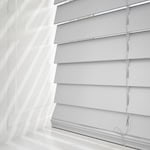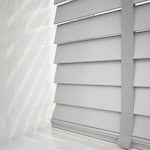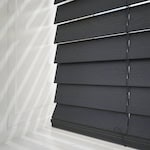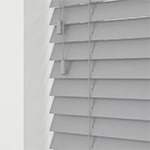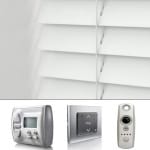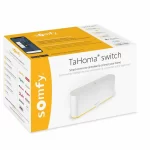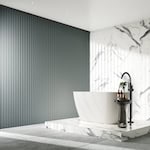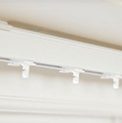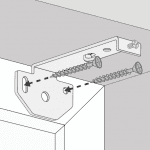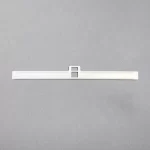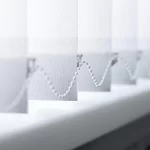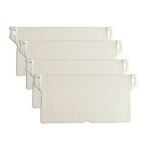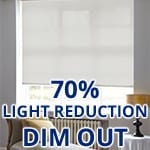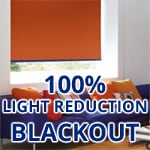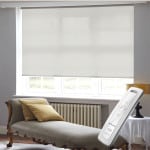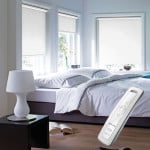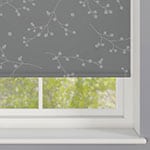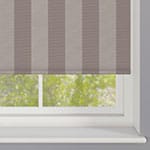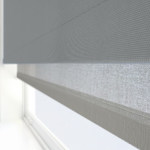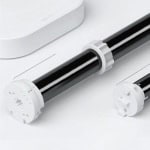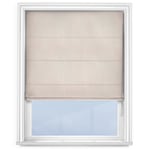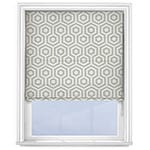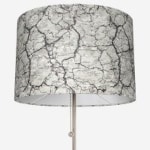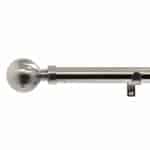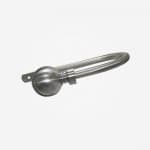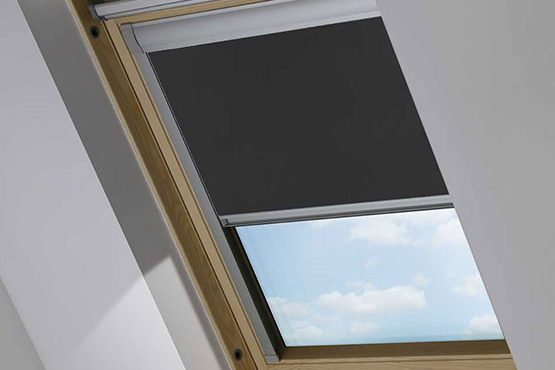The Ultimate Guide to Skylight Blinds: Everything You Need to Know

Skylight blinds are a practical and stylish solution for controlling light, temperature, and privacy in rooms with skylights. Whether you want to block out the sun’s glare, reduce heat gain, or simply add a decorative touch to your space, skylight blinds offer numerous benefits. This guide covers everything you need to know about skylight blinds, from types and benefits to installation and maintenance tips.
1. Benefits of Skylight Blinds
Light Control
Skylight blinds allow you to manage the amount of natural light entering a room. This is particularly useful for reducing glare on screens or creating a darker environment for sleeping.
Temperature Regulation
By blocking or filtering sunlight, skylight blinds help maintain a comfortable indoor temperature. They can prevent overheating in the summer and reduce heat loss in the winter, contributing to energy efficiency.
UV Protection
Skylight blinds protect your furnishings, flooring, and artwork from harmful UV rays, which can cause fading and damage over time.
Privacy
In urban areas or multi-story buildings, skylight blinds provide an added layer of privacy, preventing views from above while still allowing natural light to filter in.
Aesthetic Appeal
Available in various styles, colors, and materials, skylight blinds can enhance the décor of your room. They offer a sleek, modern look that complements any interior design.
2. Types of Skylight Blinds
Manual Skylight Blinds
Manual blinds are operated by hand using a pole or handle. They are simple to use and cost-effective, making them a popular choice for easily accessible skylights.
Electric Skylight Blinds
Electric blinds are motorized and can be controlled via a remote, wall switch, or smartphone app. They are ideal for hard-to-reach skylights and offer convenience and ease of use.
Solar-Powered Skylight Blinds
Solar-powered blinds use solar panels to charge their batteries, eliminating the need for wiring. They are eco-friendly and can be controlled remotely, making them a great option for sustainable living.
Blackout Skylight Blinds
Blackout blinds are made from opaque materials that completely block out light. They are perfect for bedrooms, home theaters, or any space where you need to eliminate external light sources.
Light Filtering Skylight Blinds
Light filtering blinds diffuse natural light, creating a soft, pleasant glow in the room. They reduce glare while maintaining a level of brightness, suitable for living areas and kitchens.
3. Choosing the Right Skylight Blinds
Consider Your Needs
Think about the primary function of the blinds. Do you need complete darkness for a bedroom or just light diffusion for a living room? Your needs will determine the type of blinds that are best for you.
Material and Color
Choose a material and color that complements your room’s décor. Consider thermal properties if temperature control is important, and opt for UV-resistant fabrics for maximum protection.
Ease of Operation
Decide whether you prefer manual, electric, or solar-powered blinds based on the accessibility of your skylight and your convenience needs. If choosing manual blinds, consider whether you need an operating pole to reach the blind easily.
Measuring Your Skylight (Branded Windows)
Most branded skylights come with a size identification plate or sticker on the window frame. This can be used to purchase the correct blinds for your window. If you cannot find the size code for your window, measure the visible glass area inside the frame and compare these measurements with the skylight manufacturer’s sizing information to determine the correct size code. Accurate measurements are crucial for a perfect fit. Measure the width and length of the visible glass area of your window, and repeat these measurements to ensure accuracy.
Below are links to sizing guides for common skylight manufacturers:
Measuring Your Skylight (Unbranded or Custom Size Windows and Roof lanterns)
Measuring a roof lantern accurately is essential for ensuring your blinds fit perfectly. Follow these steps to get precise measurements:
Tools Needed:
- Steel tape measure
- Notepad and pen
- Ladder or step stool (if necessary)
- Assistant (optional, for easier handling)
Step-by-Step Instructions:
Measure the Width:
- Start by measuring the width of the roof lantern.
- Place the end of the tape measure at the inner edge of the frame on one side.
- Extend the tape measure across to the inner edge of the frame on the opposite side.
- Record the measurement in centimeters, ensuring it’s accurate to the nearest millimeter.
Measure the Length:
- Next, measure the length of the roof lantern.
- Position the tape measure at the inner edge of the frame at one end.
- Stretch the tape measure to the inner edge of the frame at the opposite end.
- Write down this measurement, again being as precise as possible.
Measure the Depth (Optional):
- If your blinds require depth measurements (for recess fitting), measure the depth of the frame from the surface of the glass to the outer edge of the frame.
- Note this measurement to ensure the blinds fit well within the recess.
Double-Check Measurements:
- Repeat the width and length measurements at least twice to confirm accuracy.
- Compare your measurements to ensure consistency and correct any discrepancies.
Consider Any Obstructions:
- Note any handles, cranks, or other obstructions that might affect the installation of the blinds.
- Measure the distance from these obstructions to the edge of the frame and record these details.
Take Notes of Specific Requirements:
- Note if there are any specific requirements or preferences for the blind installation, such as side channels or specific mounting positions.
- Consider whether you want the blinds to sit inside the frame (recess fit) or outside the frame (face fit).
4. Installation Tips
DIY Installation
If you’re handy, you can install skylight blinds yourself. Follow the manufacturer’s instructions carefully, and ensure you have all the necessary tools. Secure the brackets, attach the blinds, and test their operation.
Professional Installation
For hard-to-reach skylights or complex installations, consider hiring a professional. They have the expertise to ensure a perfect fit and smooth operation.
5. Maintenance and Care
Regular Cleaning
Dust the blinds regularly with a soft cloth or vacuum with a brush attachment. For fabric blinds, check if they are machine washable or if they require spot cleaning.
Inspect Mechanisms
Periodically check the operation of manual or electric blinds. Ensure that cords, pulleys, and motors are functioning correctly. Lubricate moving parts if necessary to maintain smooth operation.
Address Repairs Promptly
If you notice any damage or malfunction, address it promptly to prevent further issues. For electric or solar-powered blinds, check the batteries and replace them if needed.
Frequently Asked Questions About Skylight Blinds
- What are the benefits of installing skylight blinds?
- Light Control: Manage the amount of natural light entering the room.
- Temperature Regulation: Helps in maintaining comfortable indoor temperatures.
- UV Protection: Protects furnishings from harmful UV rays.
- Privacy: Adds an extra layer of privacy.
- Aesthetic Appeal: Enhances the room’s décor.
- Are skylight blinds energy-efficient?
- Yes, they can help regulate indoor temperatures by blocking heat in the summer and retaining warmth in the winter, leading to lower energy bills.
- How do manual skylight blinds compare to electric ones?
- Manual Blinds: Cost-effective and straightforward to use, but may be difficult to operate on hard-to-reach skylights.
- Electric Blinds: Offer convenience, especially for high or hard-to-reach windows, and can be integrated with smart home systems. They are more expensive but offer ease of use.
- Can skylight blinds block out all sunlight?
- Blackout skylight blinds can block out nearly all sunlight, making them ideal for bedrooms and media rooms. Light filtering blinds will diffuse sunlight but not completely block it.
- What materials are best for skylight blinds?
- Polyester: Durable, easy to clean, and available in various colors and patterns.
- Aluminum: Often used for Venetian blinds, providing a sleek look and excellent durability.
- PVC: Ideal for areas with high humidity like bathrooms.
- Fabric: Offers various levels of light filtration and adds a soft aesthetic.
- Are there blinds specifically designed for moisture-prone areas like bathrooms?
- Yes, materials like PVC and treated polyester are moisture-resistant and suitable for bathrooms and kitchens.
- How do I clean and maintain my skylight blinds?
- Regular Dusting: Use a soft cloth or vacuum with a brush attachment.
- Deep Cleaning: Fabric blinds may be spot cleaned, and some can be machine washed. Metal and PVC blinds can be wiped down with a damp cloth.
- Can skylight blinds help reduce glare on screens?
- Yes, light filtering and blackout blinds can significantly reduce glare on TV and computer screens.
- How do solar-powered skylight blinds work?
- They use a small solar panel to collect sunlight, which charges a battery that powers the blinds. This eliminates the need for electrical wiring and is environmentally friendly.
- What colors and designs are available for skylight blinds?
- Skylight blinds come in a wide range of colors, patterns, and textures, allowing you to choose one that complements your décor. Options include solid colors, prints, and various fabric textures.
- Are skylight blinds easy to install by myself?
- Many skylight blinds are designed for DIY installation with clear instructions and necessary hardware included. However, installation difficulty can vary depending on the window’s height and accessibility.
- Should I hire a professional to install my skylight blinds?
- If your skylights are hard to reach or if you prefer a guaranteed perfect fit, hiring a professional can ensure proper installation and save you time and effort.
- How do I operate electric or solar-powered skylight blinds?
- These blinds can be operated using a remote control, wall switch, or via a smartphone app. Some models integrate with home automation systems like Google Home or Amazon Alexa for voice control.
- Can skylight blinds be customized to fit irregular window shapes?
- Yes, many manufacturers offer custom solutions for non-standard or irregularly shaped skylights. Custom blinds are made to your specific measurements to ensure a perfect fit.
- What is the average cost of skylight blinds?
- The cost varies widely based on the type, material, and brand. Manual blinds can range from £30 to £150 per window, while electric or solar-powered blinds can cost £150 to £500 or more.
- Are skylight blinds safe for homes with children and pets?
- Yes, especially cordless and motorized options which eliminate the risk of entanglement. Many blinds also come with safety features like cord cleats and tensioners.
- How long do skylight blinds typically last?
- With proper care, skylight blinds can last anywhere from 5 to 15 years. Manual blinds tend to have a longer lifespan due to fewer mechanical parts, while motorised blinds may require occasional maintenance or battery replacement.

